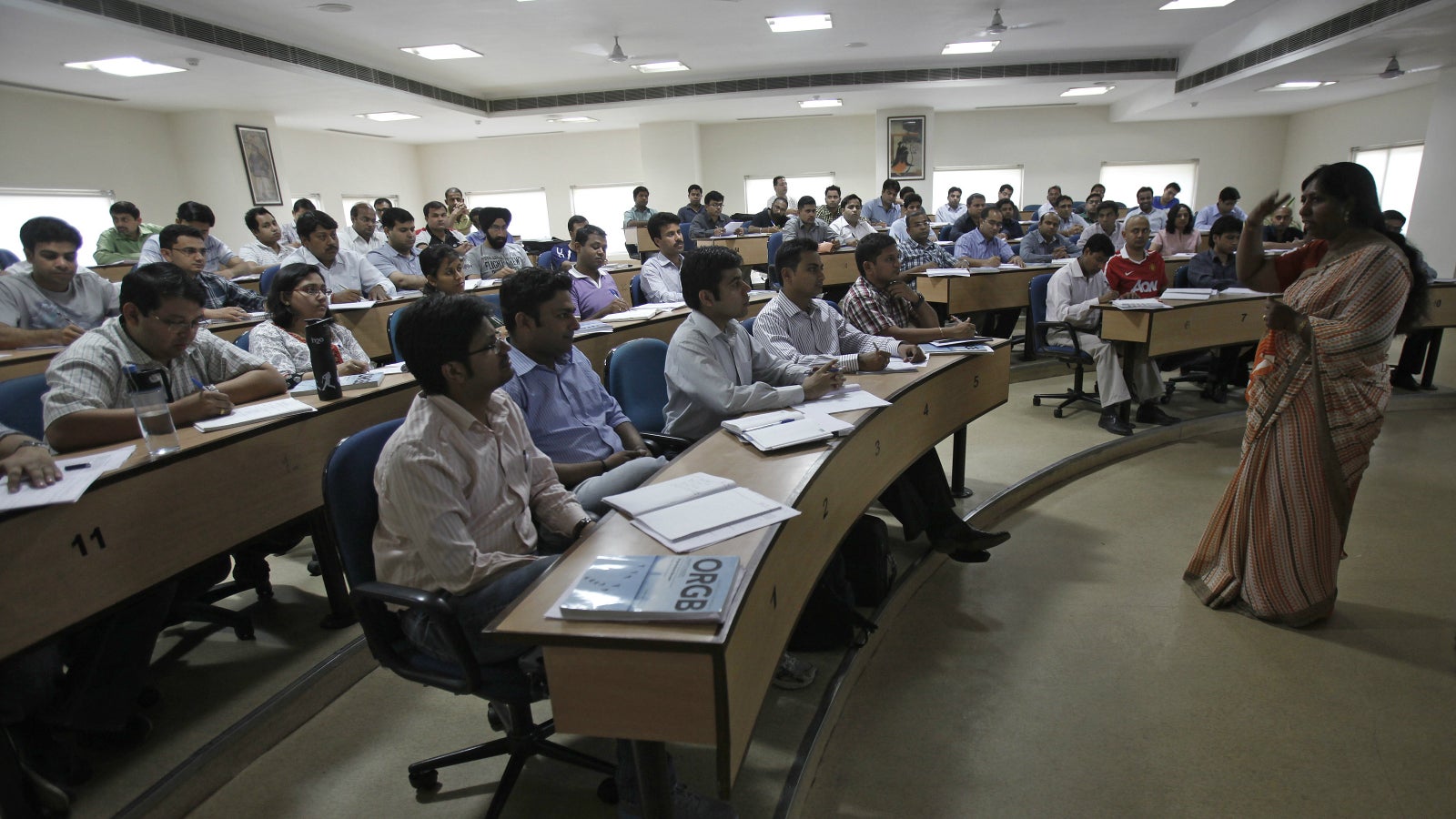The “I don’t care” attitude of Indian universities is keeping them off global rankings
The Times Higher Education’s (THE) World Reputation Rankings for universities are out. And Indian educational institutions are nowhere in the top tier of the list.


The Times Higher Education’s (THE) World Reputation Rankings for universities are out. And Indian educational institutions are nowhere in the top tier of the list.
One of the world’s most prestigious rankings, THE as usual had a large number of institutions from the US and UK, including the three-century-old Harvard University and the Massachusetts Institute of Technology.
However, China sprang a surprise this time. Its Tsinghua and Peking universities were ranked better than Cornell, University of Pennsylvania, and even Imperial College London.
The Times Higher Education World Reputation Rankings 2017
These rankings are based on top academics’ perceptions, the institutions’ global partnerships, and high-impact research published in leading journals.
So, what’s wrong with Indian universities? Last year, India’s best institution, the Indian Institute of Science, was only ranked between 200 and 250, while 18 others found a spot in the top 800.
In an interview with Quartz, Narayan Ramaswamy, partner and head of education practices at consultancy firm KPMG, explained this phenomenon. Edited excerpts:
Why do Indian universities fail quite miserably at global rankings?
The ranking of universities is a reasonably recent phenomenon.
It started with the Shanghai Rankings and then it caught on, with many others taking it to the next level. These rankings suited the western way of running a university. Research had a large focus and funding came predominantly from the government, particularly like in the US, UK, Singapore, (and) Australia. These institutes had been around for hundreds of years.
Indian universities are not the ones who usually do publicity. Another factor is social commitment. No other country has its social agenda combined with education. For instance, there is reservation for students (of various castes) and even faculty.
Also, culturally, they are not used to competition among themselves. Most of these universities don’t have the funding that some of the global universities have. All this, along with the attitude of, “I don’t care,” “I am doing what I am doing” because I have enough people otherwise, is a problem.
Is that situation changing?
That is changing. However, the pace of change is still not good enough to be in the rankings. For instance, when we talk about funding, only a handful of Indian universities gets close to that kind of government funding given to universities across the world.
But there is a good effort from the universities now. For instance, the response to the government rankings has been good. With the kind of recognition they get with the THE rankings or Quacquarelli Symonds (QS), there is an effort to improve themselves. There are many transnational universities, such as Manipal, that are effectively trying to establish themselves as a global players.
What about the IITs? They are held at such high esteem in India.
The IITs are also getting there. They are close to the parameters and are old enough. They are getting a lot of government funding. They also have alumni who are doing a lot of publicity. They are placed to go further up in these rankings. So far, they have come up from around 300 in the rankings to 200. It is only a matter of time before they come to 100 and then to double digits.
There has been an attempt to understand the rankings and an effort to collect the data.
China seems to be doing remarkably well. Why is that so?
With China, like in many other sectors, they are giving impetus to their institutions and disproportionately funding them.
In India, we have a restriction on the foreign faculty, on foreign students. China also has this, but it relaxes it for some chosen universities. In my view, that is a smart thing to do. If India is planning to build world class universities, then we need to give them complete independence.
China’s improved rankings are also quite good for India. University and higher education are one space where it is not always competition. There is collaboration, and if there are more universities closer home for collaboration then that is good news. Better collaborations and improved citing of research are also good.
What is it that the government can do to help?
The government has identified some universities. It is instilling a spirit of competition among the universities with its rankings. Now, the government needs to relax norms on foreign students and foreign faculty.
The rankings are something that we shouldn’t ignore. Because India is not living in isolation. Unless you are in the rankings, you are not competing globally. Punjab University is a good example. A few years ago, they collaborated with European universities and it helped them in presenting their data and citations. It’s not rocket science and it just needs a change in mindset.